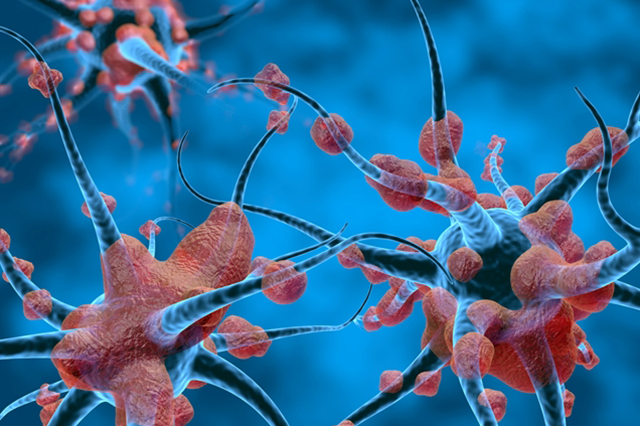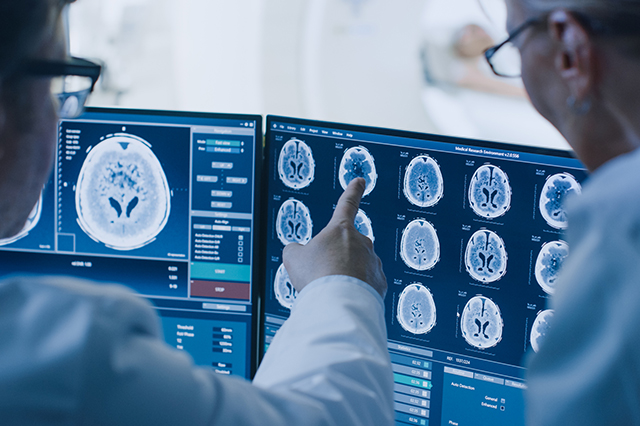Gait Disorders
Clinical Overview
Gait disorders are common, present in more than half of non-bedbound patients on neurology inpatient service, present in over 20% of geriatric patients (increasing with age) and are frequent reasons for a movement disorder outpatient consultation. Gait and balance are connected, complex sensorimotor behaviors that are automatic in nature but guided by cognitive (executive) and affective functions. They involve several sensory, motor and cognitive systems that allow for smooth locomotion, sustained balance, and ability to adapt to the environment. Abnormalities of gait and balance can be caused by peripheral and central nervous system disorders, from motor weakness and sensory loss, to loss of automaticity to cognitive decline. The consequences of gait dysfunction are serious: in some falling with secondary injury, and others, slow and insecure gait with a ‘fear of falling’ and need for assistive devices, all ultimately resulting in social isolation and reduced activity. Gait disorders predict poor quality of life and increased morbidity and mortality. In assessing fall risk the presence of a prior fall in the last 6 to 12 months is the best predictor. Falls are the result of many causes and the most common cause for injury related hospital admissions.
View complete description
Several classification schemes have been devised for gait disorders: they can be classified according to the nervous system complexity level - lower, middle, and higher level; anatomic lesions location (i.e. cerebellar, frontal lobe etc); by cause (i.e. vascular disease, degenerative parkinsonism, spinocerebellar ataxias) and finally by its clinical phenomenology (i.e. ataxia, parkinsonism, dyskinesia). Gait disturbances may also be sub-classified as continuous (appearing whenever the patient walks) or episodic, such as festination and freezing.
Most gait disturbances can be diagnosed and classified after obtaining a good history and performing a detailed physical and neurological exam including watching the gait. For many, the diagnosis can be straightforward due to specific patterns of stepping, such as the wide base and varied step length and speed in ataxic gait, slow, small shuffling steps with decreased arm swing in parkinsonian gait and those due to spasticity, weakness and sensory loss. However, in some the cause is not clear and appears to take on features of several types of problems and anatomic origins (multifactorial gait disorders) or is bizarre in character, and the diagnosis is not clear. Some of those with bizarre features may be of a functional etiology.
Detailed assessment with ambulatory gait monitoring devices, gait mats or in a sophisticated gait laboratory are justified to make a diagnosis in some cases, prior to surgery to help document or identify impairments, to document subtle changes over time and for therapeutic effects, though they are more used as a research tool. Wearable devices are gaining increased interest to assess gait issues and falls. Cognitive and fall risk assessment are essential parts of the evaluation of a patient with gait disturbance including internal and external risk factors.
Treatment of gait disturbances depends on the underlying cause. It is important to review the patient’s medication list to be assured the problem is not drug-induced, such as drug-induced parkinsonism related to antipsychotics. Treatment should include active interventions to decrease fall risk which may include medical (for spasticity, dystonia, parkinsonism, or chorea), surgical and physical therapy interventions which usually are given simultaneously.
Contributed by Nir Giladi, MD
Director, Movement Disorder Unit
MD Unit, Department of Neurology
Tel Aviv, Israel
2019 Updates Contributed by:
Stewart Factor, DO
Director Movement Disorders Program, Emory University School of Medicine
Atlanta, GA, USA
Brandon Barton, MD
Assistant Professor, Rush University Medical Center
Chicago, IL USA
Jump to:
Resources on Gait

Video Case Library
Browse an archive of nearly 2,000 case videos and other multimedia. ✪ MEMBERS ONLY

Patient Handout
Gait Disturbances and Freezing in Parkinson's Disease: Essential Facts for Patients
Printable handouts in a variety of languages.
Latest Articles and Media
![]()
Standardizing the Large-Volume "Tap Test" for Evaluating Idiopathic Normal Pressure Hydrocephalus: A Systematic Review
- Published paper
![]()
Clinical Features of Idiopathic Normal Pressure Hydrocephalus: Critical Review of Objective Finding
- Published paper
![]()
Measuring gait through brain metabolism in Parkinson's disease: How it can help understanding and treating gait disorders
- Podcast
![]()
Addressing the challenges of clinical research for freezing of gait in Parkinson’s disease
- Published paper
![]()
Discussion of Research Priorities for Gait Disorders in Parkinson’s Disease
- Published paper
![]()
Acetylcholine nuclei atrophy predicts gait changes in Parkinson's disease
- Podcast








